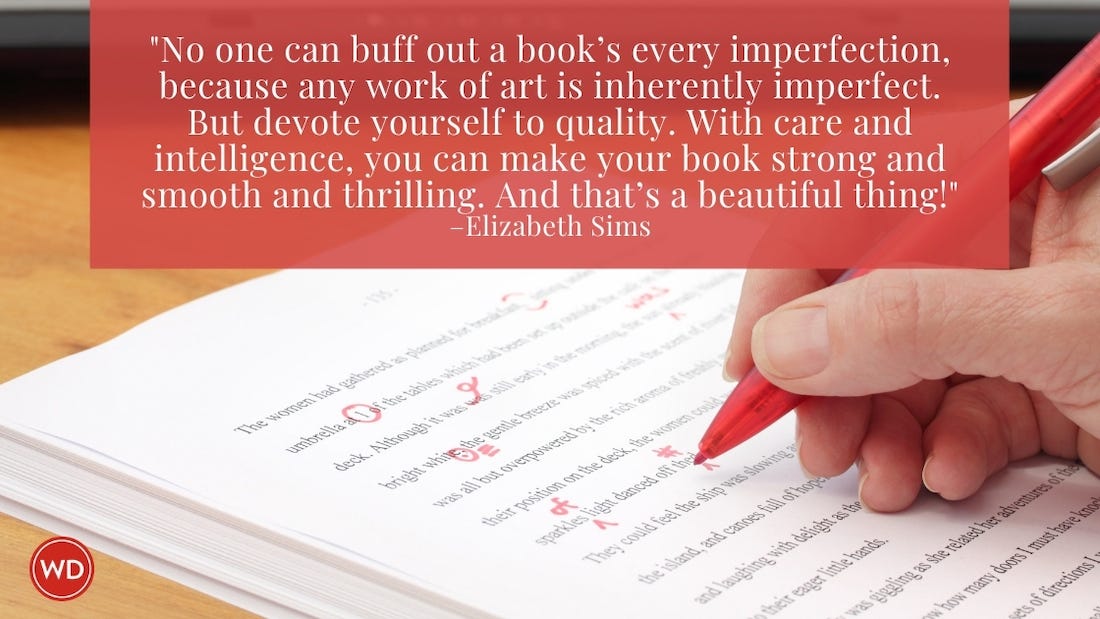Writing Strong Female Characters: Defining a Bitch
If you’re interested in breaking the mold with your character, there is no single criterion for a bitch. However, you might want to consider making several of her dominant traits…
If you’re interested in breaking the mold with your character, there is no single criterion for a bitch. However, you might want to consider making several of her dominant traits negative or what society has typically not expected of females. For example, her traits might include being manipulating, selfish, cunning, power-seeking, or vengeful. Or, perhaps your bitch character cannot connect to others emotionally, or she is sexually insatiable. Or maybe she’s simply a nonconformist who is opinionated, mouthy, aggressive, ambitious, or confident.
How to Create a Bitchy Character
The juxtaposition of what women are supposed to be—sweet, feminine, compliant, and vulnerable—and what they are truly capable of being—tough, athletic, powerful, and violent—creates a natural friction that can yield fascinating results in fiction. With this in mind, you might want to brew a blend of traits that hold contradictions or create conflict. Perhaps your character is ambitious, yet is living at a time in history or in a culture where women have few options to express their ambitions.
Another aspect that cannot be ignored is that today, women’s lives are shaped similarly to men’s lives—most women leave the house each morning for their nine-to-five jobs, they explore the world independently, and they experience sex outside of marriage. So, because women face the same pressures and experiences of men, they might not fit into the archetypes of storytelling and instead might be feeling the disquiet of our times. Like men, they might feel sexual restlessness. Or they might be searching for their authentic self, questioning what fulfillment means for them. Or their main conflicts might be within, or they feel isolated or adrift in their roles. Or, if they’re working mothers, the double demands of job and family might lead them to act out.
As an author in today’s society, you have much more latitude than writers of previous generations when it comes to writing female characters, and you can write stories, especially endings, that don’t provide easy answers and don’t punish women for fl outing convention. Perhaps your bitch character is not a clear-cut bad ass to focus the reader’s anger on. Perhaps she can raise much more complicated truths or issues, and thus create a much more interesting story.
Your characters can confront moral dilemmas and hot-button issues; form complex relationships; question their unfolding identities; be tempted by sin or crime; be delighted by ordinary or forbidden pleasures; or struggle with illness, aging, fidelity, and power. In other words, your characters can face universal themes and issues.
Tips For Writing Strong Female Characters
When writing a female character who is a bad ass, you must decide if you want the reader to question preconceived assumptions about women, or if you want the reader to fear or admire her. Perhaps you want to write about especially spunky women because you admire this trait. But then maybe your aim is that the reader asks how she dare be so uppity or bold. This might require that she’s particularly abrasive, or that the story is set in previous centuries when such behavior was typically frowned on.
Do you want your reader to be appalled when your bitch character dares not to follow the rules? Or do you want the reader to be silently applauding from the sidelines? If your character has children, you need to make clear decisions about how she sees her place as a mother, even if that means she’s ambivalent about motherhood. So if your bitch leaves her child, as happens in the film Kramer vs. Kramer, the reader must understand why she takes this drastic step. Or if, after leaving her marriage and finding a new love, your character places her child in danger, as Anna Dunlap does in Sue Miller’s The Good Mother, the reader must clearly understand her motivations for leaving and feel empathy for her new life.
On the other hand, in genres from chick lit to thrillers, sometimes the reader is also cheering for a bitchy (meaning she has at least several supposedly negative traits) character. Some readers are thinking good for her, she’s broken the rules, she’s shattered the glass ceiling, she’s enjoying great sex, she’s taking risks—it’s about time! The bottom line is that you need to make choices about how sympathetic your character is. Consider using tightly woven themes that will likely somehow comment on some aspect of society.
This excerpt is from Bullies, Bastards, and Bitches by Jessica Morrell. Buy the book and learn how to write:
- Unlikeable protagonists
- Anti-heroes
- Dark heroes and bad boys
- Antagonists, bullies, and mischief makers
- Sociopaths and villains
- Dangerous Women
- Monsters, creatures and lost souls








